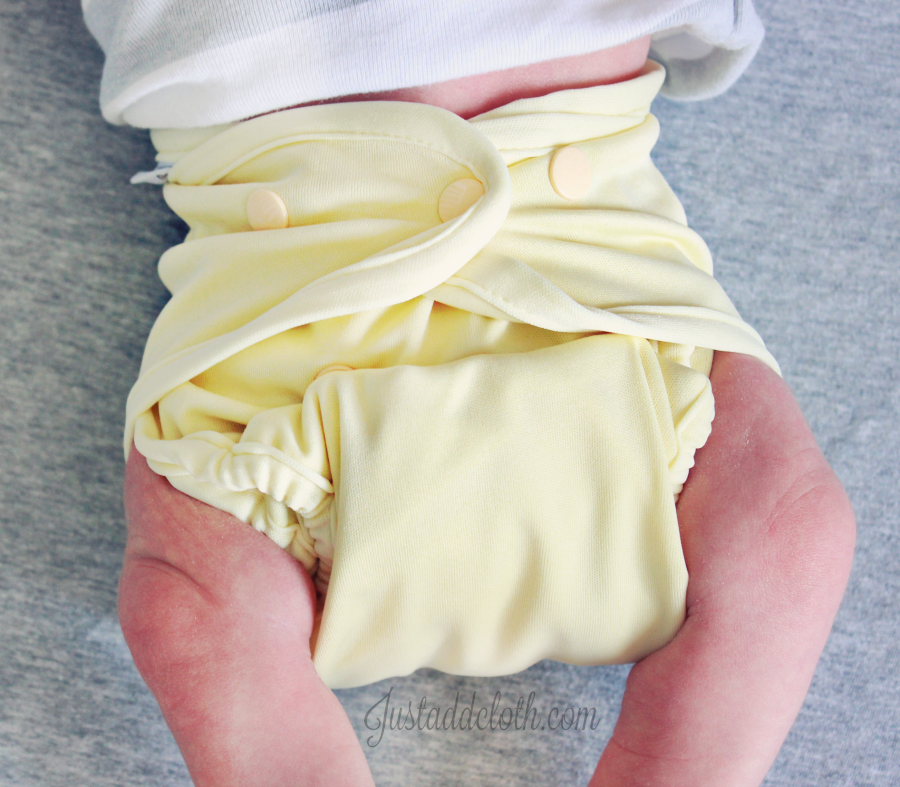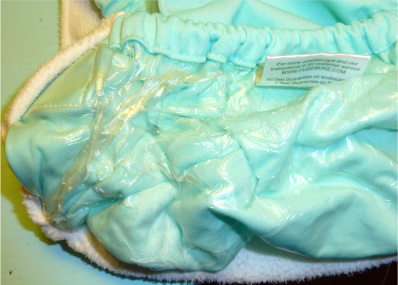
The newborn phase is hard enough without leaky diapers adding to the stress.
Middle of the night. All over the crib. All over your bed. All over your Lap.
Leaks happen. They happen despite your best intentions. But you do not need to suffer. Most diaper leaks can be prevented with a little experimentation.
Leaks are a big concern for many parents whether they use cloth diapers or disposables. Leaks are inconvenient and time consuming when they add to the ever growing laundry pile. Just like with different brands and styles of disposables, cloth diapers come in several varieties and what works for one baby may not work for another.
Newborns have many runny bowel movements per day and skinny legs. These two things are a tricky combination when it comes to leaks. The biggest causes of leaks with cloth diapers are a poor fit and not enough absorbency.
In my experience, a poor fit usually involves the leg holes or the diaper as a whole being too loose. The diaper needs to be snug. If you can fit more than a finger (snugly) in the leg hole or in the back of the waist, then the diaper is likely too loose and will leak or compression wick.
All-in-ones and pocket diapers are the cloth diapers most likely to leak during the newborn phase. These styles often do not size down enough or do not have enough versatility to get just the right fit for a new baby. If you want to make your collection of newborn AIOs work for the time being, and the leaks are not too bad, you might consider fleece pants or soakers as an extra layer of protection. Fleece will keep urine at bay instead of soaking it up and wicking it out like cotton. For the best urine and feces containment, a fitted diaper or a prefold using the jelly roll fold are superior. Both provide a better seal around the legs and are less prone to compression wicking.**
Much of the time, leaks are also an absorbency issue. Young infants urinate A LOT. More than many people realize. A single insert in a pocket diaper or a very small prefold simply will not last long before needing to be changed. If you have a single, small insert in the pocket shell, it is perfectly normal for it only to last an hour before the insert becomes saturated. A saturated insert will leak. The liquid needs to go somewhere. The diaper is not defective, you simply need to either add extra absorbency or change more often. My son was a big nurser and easily went through a small pocket diaper in 45 minutes many times. Consider how many ounces of fluid your baby is drinking and then plan your diapers accordingly. Some insert manufacturers actually list how many ounces their product can hold.
Most leaks are NOT caused by repelling issues. Urine simply takes the path of least resistance. A loose leg opening or an already wet insert will guarantee that path will lead straight out of the diaper and onto the crib sheet, your lap, or the fresh outfit you just put on the baby an hour ago. So adjust the cloth diapers to be snug. Don’t worry too much about marks on the skin. Loose diapers and disposables can leaves marks too. And add more absorbent cloth. Yes, it will make the diaper more bulky, but trust me, it bothers you far more than it bothers the baby. A fluffy bum is a fact of life for cloth diapering. And if your cute fluff leak solution is a bit puffy, so be it.




